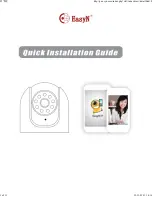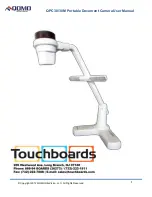
8
The Camera
•
This camera is a precision instrument. Do not drop it or expose it to physical shock.
•
The camera is not waterproof and should not be used in wet conditions or underwater.
If the camera gets wet, take it to your nearest Canon dealer as soon as possible. If
small amounts of water splash onto the camera, wipe it with a clean dry cloth. If the
camera is exposed to salty air, wipe it thoroughly with a slightly damp cloth.
•
Never leave the camera close to devices that generate strong magnetic fields, such
as magnets or electric motors. Do not operate or leave the camera in areas where
strong electromagnetic signals are generated, such as near electronic transmission
towers. Exposing the camera to strong electromagnetic signals can cause it to
malfunction and destroy recorded image data.
•
Do not leave the camera in hot locations, such as in a car sitting in direct sunlight.
High temperatures can damage the camera.
•
The camera contains precision circuits. Never attempt to disassemble the camera or
service it yourself.
•
Use a commercially available blower brush to remove any dust that accumulates on
the camera lens, viewfinder, mirror, or focusing screen. Do not use cleaners that
contain organic solvents to wipe off the camera body or lens. If the camera is very
soiled, consult your nearest Canon dealer.
•
Do not touch the camera’s electrical contacts with your hands. Doing so could
corrode the contacts and interfere with the camera’s normal operation.
•
If the camera is suddenly brought in from the cold into a warm room, condensation
may form on the camera and internal parts. To prevent condensation, first put the
camera in a sealed plastic bag. Let the camera adjust to the warmer temperature
before taking it out of the bag.
•
Do not use the camera if condensation forms on it, or you could damage it. If this
occurs, remove the lens, CF card and battery from the camera, and wait until the
condensation has evaporated before using the camera.
•
If the camera will not be used for an extended period, remove its battery and store
the camera in a cool, dry, well-ventilated location. While the camera is in storage,
operate its shutter periodically to make sure that it is working.
•
Avoid storing the camera in locations where potentially corrosive chemicals are
used, such as in a laboratory.
•
If the camera has been in storage for an extended period, check its components
before using it. If you have not used the camera for some time or are planning to take
shots you will not want to lose (overseas vacation, etc.), have the camera checked
by your Canon dealer beforehand, or check for yourself that the camera components
are working properly.
LCD Panel and LCD Monitor
•
The LCD monitor is manufactured with very high precision technology. However,
there may be a few dead pixels where a black or red pixel is always displayed. They
number no more than 0.01 percent of all effective pixels. They are not a malfunction
and do not affect the images recorded.
Handling Precautions
Summary of Contents for EOS EOS 300D
Page 1: ...E INSTRUCTION MANUAL E INSTRUCTION MANUAL...
Page 2: ......
Page 120: ...119 MEMO...
Page 121: ...120 MEMO...










































